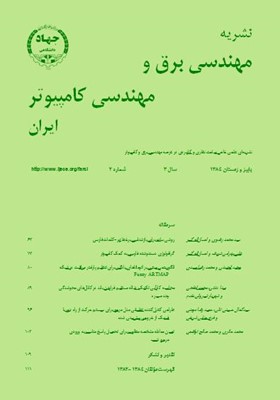تعيين معادله مشخصه مطلوب برای تحصيل پاسخ مناسب به ورودی مرجع شيب
محورهای موضوعی : مهندسی برق و کامپیوترمحمد حائری 1 * , محمدصالح تواضعی 2
1 - دانشگاه صنعتی شريف
2 - دانشگاه صنعتی شریف
کلید واژه: پاسخ حلقهبستهمعادله مشخصهورودی شيبفيلتر بسل-تامسون,
چکیده مقاله :
در اين مقاله ابتدا روشی برای پيدا کردن معادله مشخصه مطلوب برای ورودی پله بر اساس اصلاح ضرايب فيلتر بسل-تامسون معرفی میشود. مشخصات سيستم حلقهبسته بدست آمده از نظر سرعت پاسخ و ميزان بالا زدگی و خطای ماندگار مشابه کنترلکننده CDM برای ورودی پله است. سپس با استفاده از قوانين حاکم بر تبديل لاپلاس اين ضرايب در تعيين صفر و قطبهای مطلوب حلقهبسته برای ورودی شيب بکار رفته است. جهت نمايش کارايی معادله مشخصه پيشنهاد شده، کنترلکنندهای با ساختار RST طراحی و سپس با انجام شبيهسازی کامپيوتری موارد مطرح شده مورد ارزيابی قرار گرفته است.
Based on Bessel-Thompson filter design method, a new procedure is introduced to determine a desired closed loop characteristic equation for the step input signal. The transient and steady state responses of the calculated system are similar to those of the CDM (Coefficient Diagram Method) controller. Using some properties from Laplace transform, the characteristic equation is then employed to obtain a new closed loop transfer function which results in appropriate response for the ramp input signal. To evaluate the newly defined closed loop transfer function, a RST output feedback controller is designed and simulated.

